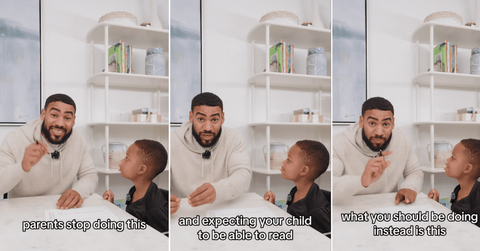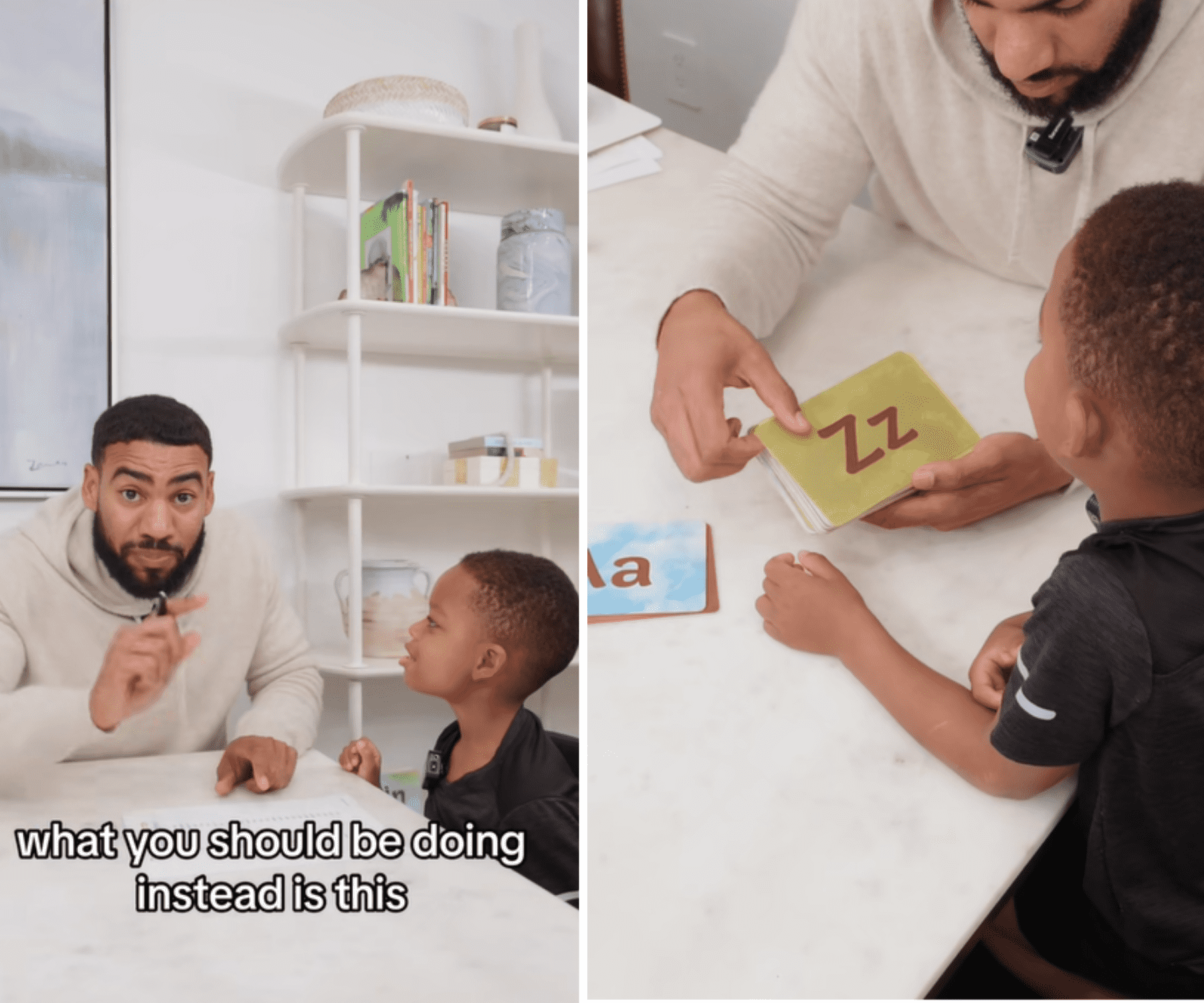
Ex-teacher reveals the most common mistakes parents make when teaching their kids to read
By Heather WakeNov. 19 2024, Updated 3:04 p.m. ET
Reading is a crucial milestone in every child's journey. And while every child's reading journey is a little different, there might be some lesser known tips that can help make it all a bit easier.
Typically, children start learning to read using "sight words"—words they recognize without having to sound them out. However, Spencer, aka @toddlerscanread suggests a different method. He advocates for teaching children to read phonetically, believing that this approach not only enhances their reading skills but also boosts their confidence, which affect multiple aspects of their ongoing education. He elaborates on this method and its benefits in a detailed video.
In the video, he begins by warning parents not to teach children reading by making them repeat "sight words" like "are," "all," "to," and "do."
Instead, he asks parents to help children visualize the letters and attach sounds to them. He demonstrates this by showing a child "Aa" and having him repeat the sound associated with the letter. He believes this approach will help the child quickly associate various elements and learn to read more proficiently.
"Stop having your child memorize sight words and instead focus on the phonics sounds (starting with the primary letter sounds). This way, they have the key to unlock any word vs. just a few on a sight word list!" he urges.
He explains the reasoning behind focusing on phonetics in another video where he states that when children are taught the alphabet through just the tried-and-true "ABC" song, they are only learning the song's pattern, not the letters themselves. So even if kids are practicing with cue cards, they'll often get the letters wrong.
But if kids are taught to attach sounds to the letters, they can better understand the "concept" of letters. In fact, Spencer suggests that parents mix and match letter cards, choosing any three and then teaching children the associated sounds and pronunciations rather than ingraining the pattern of the "ABC" song.
The former teacher says this method is also better at teaching children how to blend sounds into words both orally and through writing—in that order. For example, a kid might learn learn to mix the sound of "a" with the sound of "t" to say "at." Once that connection is made, parents can have their child identify these words when written.
Spencer believes that focusing on phonetics rather than patterns or memory is a much better approach, as it encourages children to use multiple senses. Instead of blindly following something like learning a song, they are guided towards identifying sounds and learn how those sounds feel in their body, which he considers to be a more efficient method overall.
Plenty of viewers flocked to Spencer's comment section to share their pwn praise for the phonics method.
One person shared, "Yup this is what my parents did for me and I do it with my son. It’s like a slow puzzle the brain has to figure out to put sounds and letters."
Another added, "My mom, retired teacher of 37 years, always says phonics is how you learn. My son was reading at 2!"
For more phonetic tips, be sure to give Spencer a follow on TikTok.
This article was originally published on September 5, 2023. It has since been updated.
This article was written with assistance from artificial intelligence. Megaphone creates content primarily driven by people but aims for full transparency in how our storytelling is produced. To learn more about our policy on artificial intelligence, click here.



